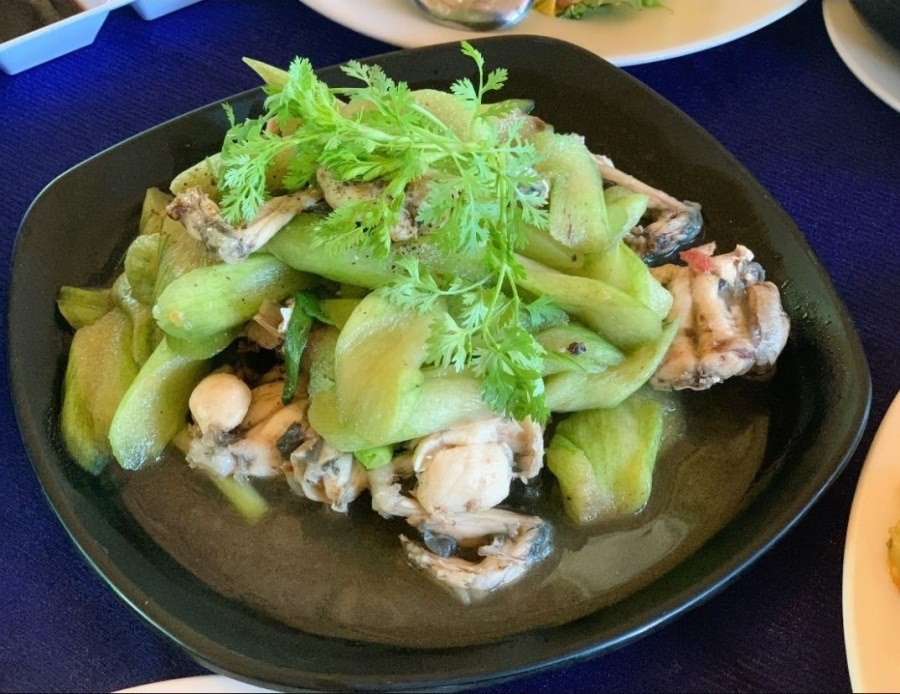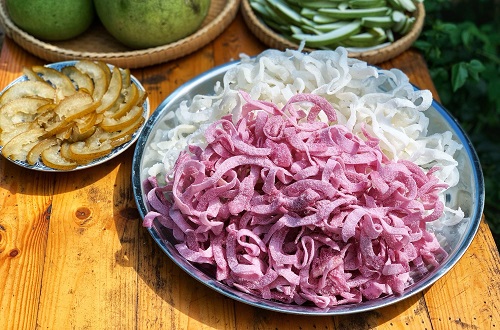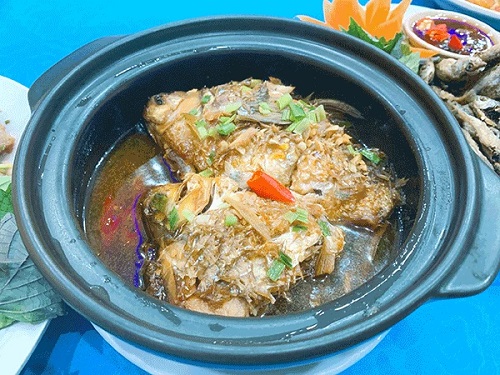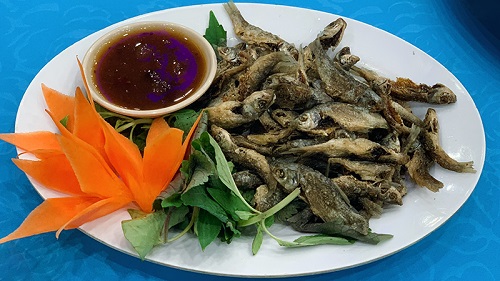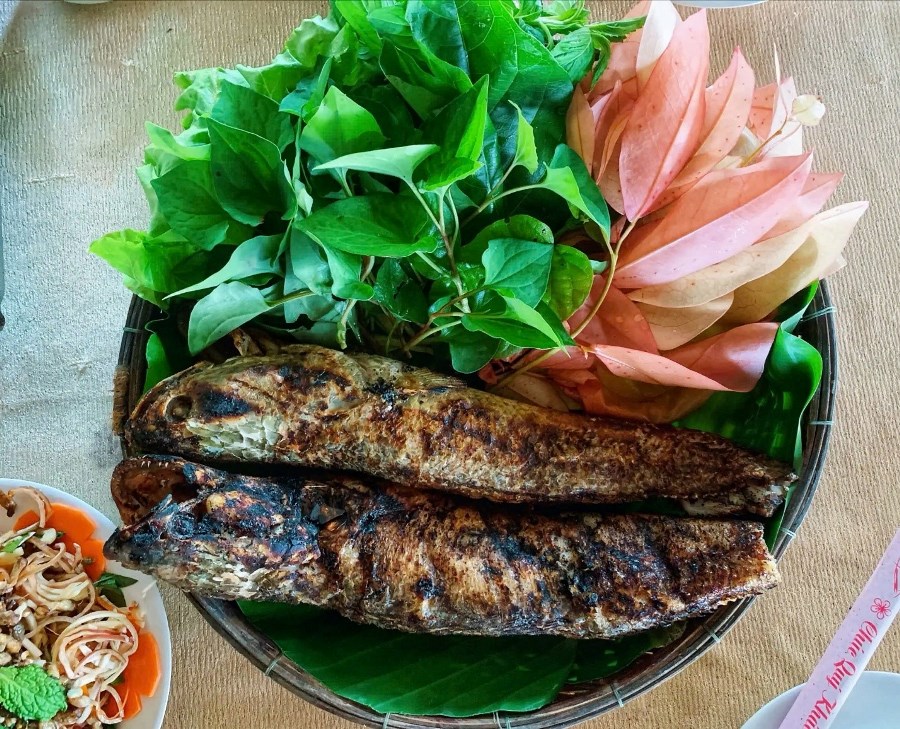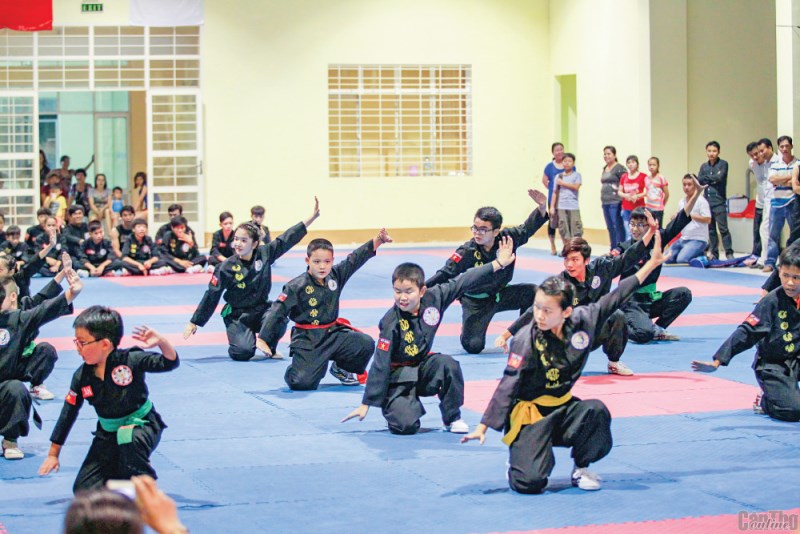
The practice of martial arts during Emperor Minh Mang's reign was widespread among the common people, particularly in martial arts schools. The training typically included physical conditioning followed by learning various techniques and stances.
The training did not require complex equipment but was highly effective. It started with carrying weights, such as lead balls or heavy stones weighing 50-60 kilograms, to strengthen bones and muscles. Then, students practiced swinging using a sturdy tree branch or a make rack for swinging. People who practiced swinging would swing themselves like a pendulum, gradually increasing the intensity until both knees reached the same level as the branch or rack. At that point, they would begin practicing flips to enhance bone flexibility. For hand training, a bag filled with rice was used, and students would punch it daily until they developed the necessary strength to punch through. Leg training involved kicking a banana tree trunk, a bag of rice, or even a brick wall without feeling pain. Jumping practice was carried out on a small mound. Practitioners would fill their pants with sand and then jump onto the mound. The amount of sand varied from minimal to substantial. Training was a lengthy process with different levels. As they became accustomed to jumping, they would remove the sand from their pants. At this stage, their bodies became lighter, and they could jump much higher than usual. Training with staff, sparring, using wooden shields, and performing grand sword dances, all had their own well-defined curriculums. The teacher would instruct using a tapping tool, and students followed the rhythms and signals of the tool for each exercise. Before training, students typically ate porridge. If they experienced muscle or tendon pain, they would use bamboo leave water for steambath.
During the Nguyen Dynasty, starting from the 17th year of Emperor Minh Mang's reign, martial arts examinations were introduced. In the 5th year of Emperor Thieu Tri's reign, there were regulations that “Vo Huong thi” (martial arts examinations) be held every year of the Rat, Horse, Cat, and Rooster according to the lunar calendar, immediately following the civil examinations. The martial arts examinations were divided into three stages as follows:
- In the first stage, candidates had to carry two weights, each weighing 120 kilograms, and walk a distance of 16 truong (each truong is approximately 4 meters) or more. Alternatively, they could carry one weight with one hand and walk a distance of 32 truong or more, earning them the "excellent" ranking. Carrying one weight and covering a distance of 24 truong or more earned them the "good" ranking while carrying two weights and covering 8 truong earned them the "fair" ranking. Those who didn't meet these criteria were considered "failed."
- In the second stage, candidates held a 30 kilograms iron staff and demonstrated various stances while walking. Achieving a distance of 60 truong was classified as "excellent," while 40 truong was "good." Failing to reach these distances resulted in a "failed" ranking. After this, they used a 70-centimeter-long sword, stood at a distance of 3 truong from a target, and thrust toward a wooden silhouette. If they hit the center and penetrated straight through, they would be graded as "excellent." Hitting the target but not the center would earn them a "good" rating while grazing the target would be classified as "fair." Failing to hit the target at all would result in a "failed" rating.
- The third stage of the examination involved marksmanship. Candidates stood at a distance of 20 truong and 5 thuoc (one thuoc approximately 33 centimeters) from the target and fired six shots. Hitting the bullseye with 2 shots, hitting the center with 1 shot, and hitting the ground target with 3 shots resulted in an "excellent" rating. Hitting the bullseye once, the center once, and the ground target four times was graded as "good." Hitting the circular area twice and the ground target four times earned a "fair" rating. If a candidate hit the target only once or missed all other shots, they would be ranked as "failed."
After the three stages of the examination, depending on the results, candidates could be granted the title of Martial Arts Bachelor or Martial Arts Master. Subsequent examinations assessed martial knowledge and literature. The requirements and standards increased as candidates progressed from the Village Examination to the Regional Examination. Candidates were evaluated based on their strength, endurance, power, and precision in martial arts techniques. The "Examination of the Court" also demanded that candidates be literate and tested their knowledge of the strategies, tactics, and military applications of famous generals. Those who passed the "Examination of the Court" would be granted the title of Martial Arts Doctor by the king, receiving the honor of being clothed in special garments, hats, belts, and the privilege of paying respects to their ancestors. Candidates who passed the Regional Examination were referred to as "Pho Bang" (Deputy Scholars).
The martial weapons used during the feudal period were meticulously crafted in royal forges and workshops, following strict specifications. Specific to Vietnam, "Thap Bat Ban Vo Nghe" also known as "Eighteen Traditional Martial Arts," refers to 18 fundamental weapon categories within various traditional martial arts schools. These weapons varied depending on the time and location. In Vietnam's Binh Dinh traditional martial arts, the "Thap Bat Ban Vo Nghe" includes the following 18 weapon categories: broadsword, spear, trident, machete, sword, halberd, shield, hammer, mace, whip, flail, baton, three-pointed spear, claw, cudgel, fabric cord with a weighted end, javelin, and combat techniques (hand, foot, and boxing). The system of "Thap Bat Ban Vo Nghe" has been present in Vietnam since the Le and Nguyen dynasties and was incorporated into the examination content for selecting scholars and martial arts doctors. The content of this examination primarily included archery, javelin throwing, shield rolling, horseback riding, spear dancing, broadsword dancing, sword dancing, trident combat, staff dancing, and martial arts sparring.
During the feudal period in our country, particularly during the Nguyen Dynasty (1802-1884), apart from state-controlled martial arts centers in the capital and major provinces and districts, there were also private dojos managed by martial arts masters in various regions. The martial arts disciplines taught were diverse and rich. Today, learning and practicing martial arts are seen as a form of physical exercise, developing physical fitness, self-defense skills, and participation in martial arts competitions both domestically and internationally. Traditional and modern martial arts receive significant attention as a non-material cultural heritage. In various competitions, Vietnamese martial artists have achieved high accolades, bringing honor to our nation on regional and international stages.
------
References:
- “Viet Nam phong tuc” (Vietnam traditions) by Phan Ke Binh, published by Hong Duc Publishing House in 2012.
"So tay Van hoa Viet Nam” (Vietnam Cultural handbook) by Dang Duc Sieu, published by Lao Dong Publishing House in 2005.
"Việt sử xứ Đàng Trong" (Vietnam history of Dang Trong region) by Phan Khoang, reprinted by Van Nghe Publishing House in 2005.
"Dai Nam thuc luc" (Dai Nam history) by Quoc Su Quan (National history agency) of Nguyen Dynasty, reprinted by Giao Duc Publishing House in 2004.
Source: Can Tho News - Translated by Hoang Dat








